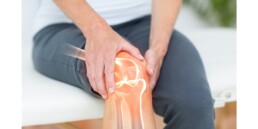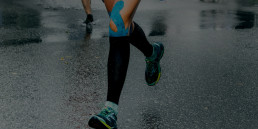De Quervain’s tendonitis takes its name from the Swiss surgeon Frédéric de Quervain who, in 1895, discovered this inflammation of the tendons of the wrist. Particularly affecting women between 40 and 50 years old, this pathology (also called tenosynovitis) is one of the most common hand tendinitis, but also one of the most painful. EVO tells you which are the most common symptoms, as well as the best treatments to relieve the pain.
How to recognize De Quervain’s tendonitis?
The mechanics of this thumb tendonitis
This inflammatory disease of the tendon sheath affects the tendons of the long and short adductor muscles, which are at the base of the thumb. Each tendon in the hand is covered by a synovial sheath (a tube made of connective tissue filled with lubricant, which surrounds the tendon like a tunnel). The mission of this sheath is to protect the tendons against excessive wear and friction, the problem arrives when our wrist movements become too repetitive and involve forceful twisting or gripping. The tendons then rub more and more against their sheath, become thicker and have less space to enjoy optimal sliding. It is this friction between the tendon and its sheath that causes pain.
The causes of tenosynovitis
It is not for nothing that this pathology first bore the name of washerwomen’s disease: at that time, women washed their clothes in the river or in a washhouse, did a lot of sewing, and overall had an excessive use of the wrist through all these tasks, which favored the onset of painful symptoms. Today, De Quervain’s tendonitis is still mainly caused by repetitive mechanical gestures over an intense or long period. Of course, trauma, shock or a sudden change in activity can also lead to this type of pathology. Tenosynovitis is also recognized as a work-related illness, where sectors such as crafts, handling, sewing, secretarial work or cashier work are the most affected.
Symptoms of De Quervain’s tendonitis
Pain is definitely the factor that makes the patient aware that something is inflamed. It occurs at the base of the thumb on the outer edge, and can then spread throughout the forearm. The more you keep using your wrist, the greater the pain will be to the point of becoming disabling. In addition to feeling pain, the patient may also observe signs such as heat, redness or swelling (increase in the volume of a tissue) at the base of the thumb. If you consult a practitioner, he or she can manipulate the thumb and observe a clicking sensation, or tendon grinding. He or she can also perform the Finkelstein maneuver, i.e. tension the tendons by moving the thumb towards the ring finger, with a palmar flexion and an ulnar inclination of the wrist. This thwarted rapprochement then awakens the pain.
Healing from De Quervain’s tendinitis: what treatments and how long to recover?
Wearing an orthopedic support to immobilize the wrist
The immobilization of the wrist is essential for a good convalescence. The orthosis is the best way to ensure healing and keep the tendons at rest. EVO Laboratory specialists use the latest technological advances in 3D printing to create the best orthosis for your condition. Thanks to 3D scanners, they measure and integrate the parameters of your morphology into a technical molding necessary for the manufacture of splints. This process guarantees a perfect fit so that your brace becomes an integral part of your body. Keep in mind that it must be worn day and night to protect the joint.
Oral and topical anti-inflammatories
The healthcare professional may also prescribe, in addition to the splint, anti-inflammatories such as tablets or creams. These can help stop the inflammation of the tendons (do not take them without the advice of a doctor first). Finally, cold is also a good alternative that helps relieve inflammation.
Injections and surgery
If anti-inflammatories are not enough to relieve De Quervain’s tendonitis, one or two local corticosteroid infiltrations can help. They are quick and painless. As for surgical treatment, it is carried out as a last option only when the tendonitis does not improve, or when painful recurrences occur. The procedure is performed under anesthesia of the upper limb and does not require hospitalization.
Healing time for De Quervain’s tenosynovitis, prevention and rehabilitation
Good news! De Quervain’s tenosynovitis can be cured, and the vast majority of people regain their mobility after a few weeks. When the pain becomes less intense or eventually disappears, you can start doing some wrist rehabilitation exercises for at least 3 to 4 weeks.
Thumb stretches
- Place your thumb in the hollow of your palm, and close your fingers over it;
- Tilt the wrist down to stretch the tendon on the thumb side;
- Hold the position for 20 seconds, then release;
- Repeat the movement several times.
Do these stretches every day for several weeks, and you should see great improvements. You know your limits, so never force yourself if you feel pain.
Rehabilitation exercises
- Take a hair band or an elastic and wrap it around your thumb and index finger;
- Spread your thumb as far as possible to put the elastic under tension;
- Hold the position for 20 seconds, then release;
- Repeat the gesture ten times (stop if you feel pain);
- Perform this exercise 2 or 3 times during the day;
You can also gradually reduce the wearing of the orthosis if you use one, but first ask your orthotist for advice. Once the pain has completely disappeared, and ideally after 4 to 6 weeks of rest, you can start your activities again gradually. Remember to go at your own pace!
De Quervain’s tendonitis: Key Highlights
- De Quervain’s tendinitis is a pathology of the wrist and thumb, and which results from repeated and intensive friction between the tendon and the synovial sheath surrounding it;
- It affects women more than men, and people engaged in a manual activity often requiring articulation of the wrist (crafts, sewing, secretarial work, mothers often carrying their babies, etc.);
- The symptoms are very often pain on palpation in the wrist or during movement, swelling, warmth or redness;
- An orthosis, anti-inflammatories, infiltrations and surgery (as a last resort) can be prescribed to relieve pain and treat tendonitis;
- Reasonable rehabilitation exercises for several weeks are recommended, always according to your pain tolerance.
Do you suffer from De Quervain’s tendonitis and are considering wearing an orthosis to help with the recovery? Get your appointment now with Laboratoire EVO, and let’s work together on your recovery!


